In pictures: Florian Meindl's studio
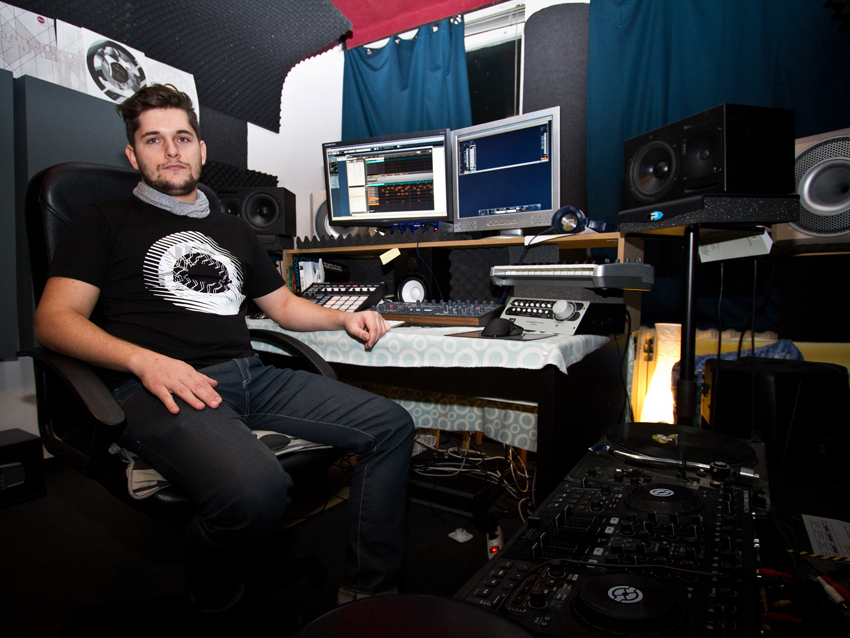
Florian Meindl
Take a look around the incredible ex-factory, ex-shady 'government' office where Florian Meindl has his studio.
This vast, derelict slab of a building is home to hundreds of bands each with their own studios and rehearsal spaces in cell-like rooms that line lengthy corridors.Battling with the acoustics of this concrete bunker-like space, Florian has crafted a studio that's the perfect home to his pioneering Techno and Minimal projects and the birthplace of his popular Riemann Kollection sample sets. We caught up with the artist in residence.
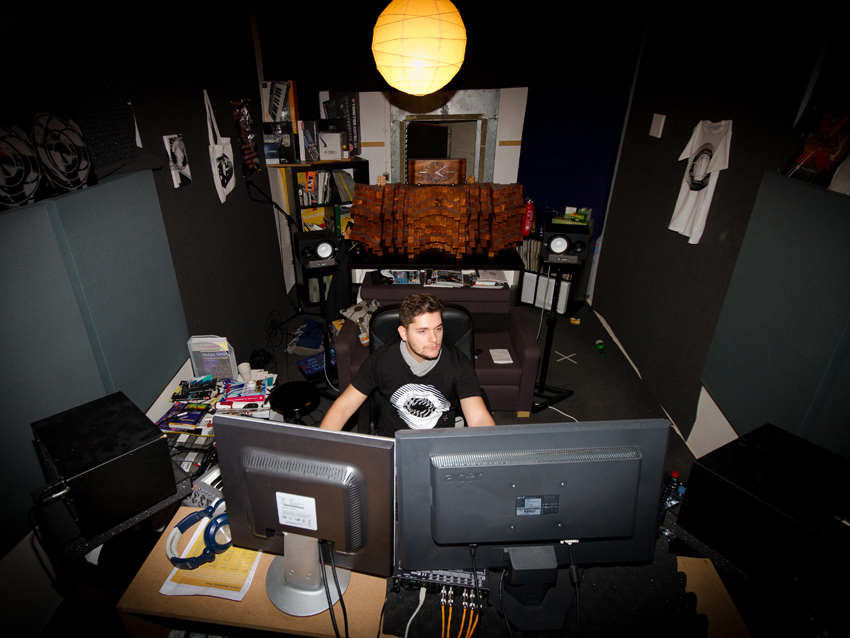
Florian Meindl overhead
“In the past there was a lot of playing around. Doing things just for fun. Now I separate my studio sessions. I’ll come to the studio just to produce new beat loops. Or I’ll compose melodies. Or I’m finishing off a few sketches of tracks.
“I have to use my time very effectively but in the past it was a lot more chaotic! For DJ sets I don’t need the studio. I prepare tracks in my office. I’ve got good speakers in my office as well so this is where is where I produce my music and my loops.”
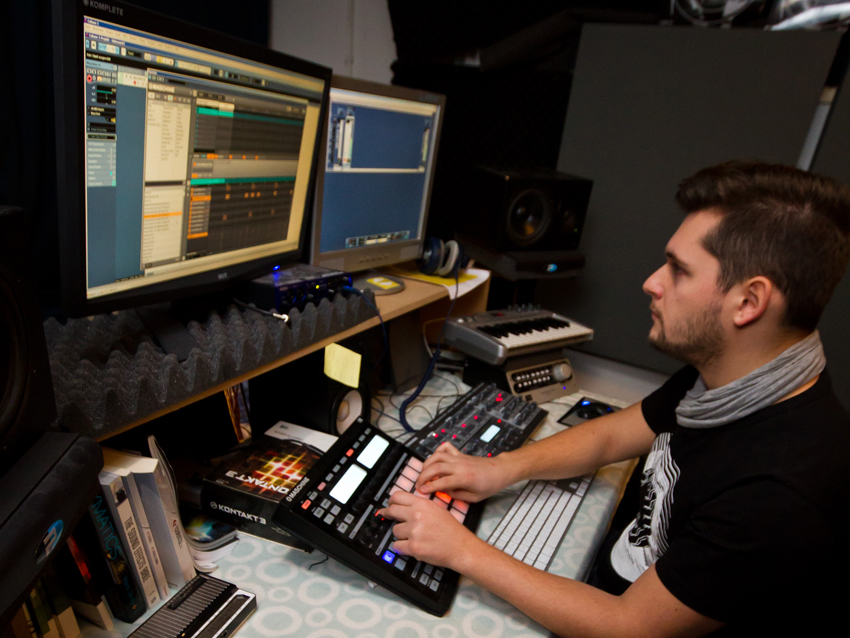
NI's Maschine
“One of my favourite things in Maschine is the 50% quantisation which moves the parts just half way towards the spot.
"It’s cool because you can quantise and still maintain a human feeling. I also like the pitch modulation on sounds which are modulated by an LFO. You can create nice vintage sounds with it. Old analogue synths always had little pitch issues which made them more interesting. You can use this feature to emulate this really well. I also often use the vintage emulations of the old Akai machines too. It’s not simply bit crushing but very good and real sounding clones of the originals.”
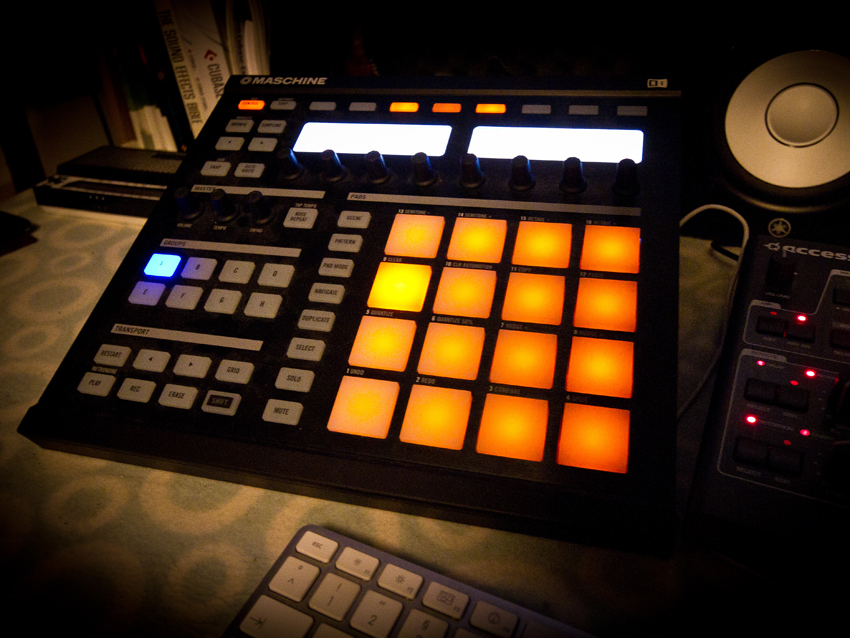
Maschine's pads
“I find the chaining of pads really good. If you press pad one for instance it also triggers pad two.
"Then, if you press pad two you just can hear pad two, and so on. This way you can automatically layer many things without having to press all the pads at the same time.”
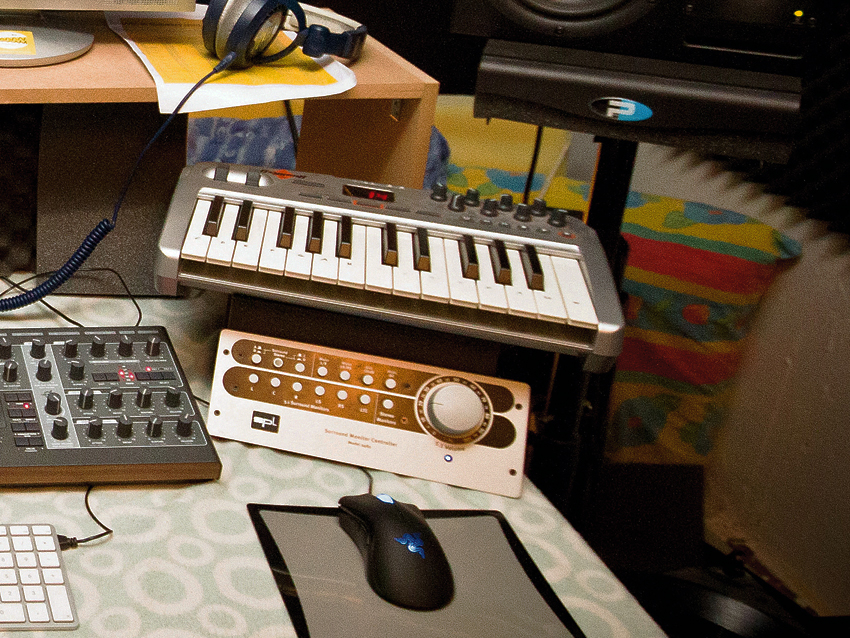
M-Audio Oxygen
“I can’t play an instrument. I can program an instrument. I can program melodies. I can punch in drums in Maschine. I know something about harmonics and chord progressions but I cannot play them.
Actually… [pauses] A little bit?… No. [decides for sure] No. I cannot play them. There’s only this little keyboard here and I don’t use it.” [laughs]
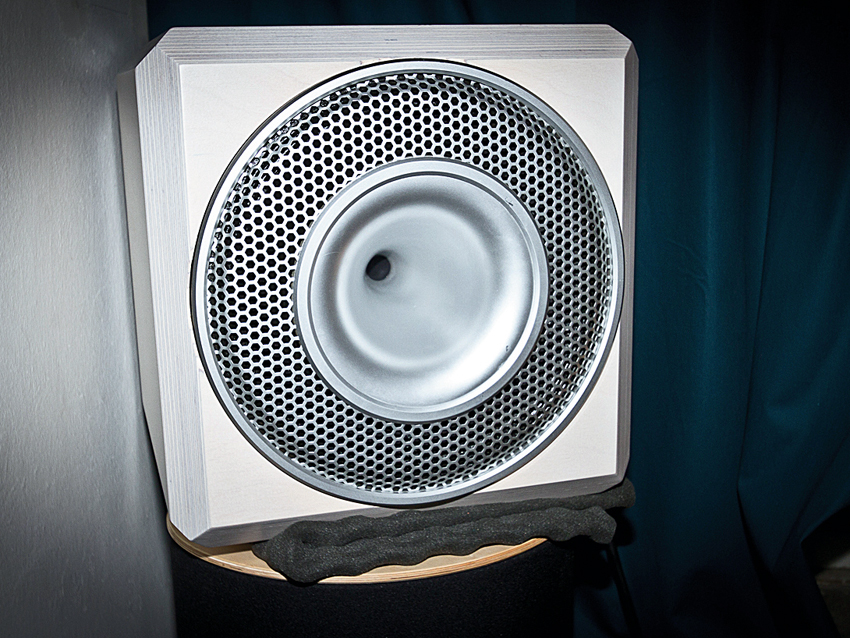
Martion Bullfrog
“I have some custom stands on the way and so they’ll look and sound awesome.
“You shouldn’t produce on them because they just sound too good! I use them to A/B. I hear things on these speakers which I don’t hear anywhere else. It’s psychological too because when I listen on these speakers it’s like ‘going into the club’ so I’m listening from the listener’s position. I recognise things in my music that I wouldn’t recognise in my position as the producer. I always switch them on for the final mixdown.”
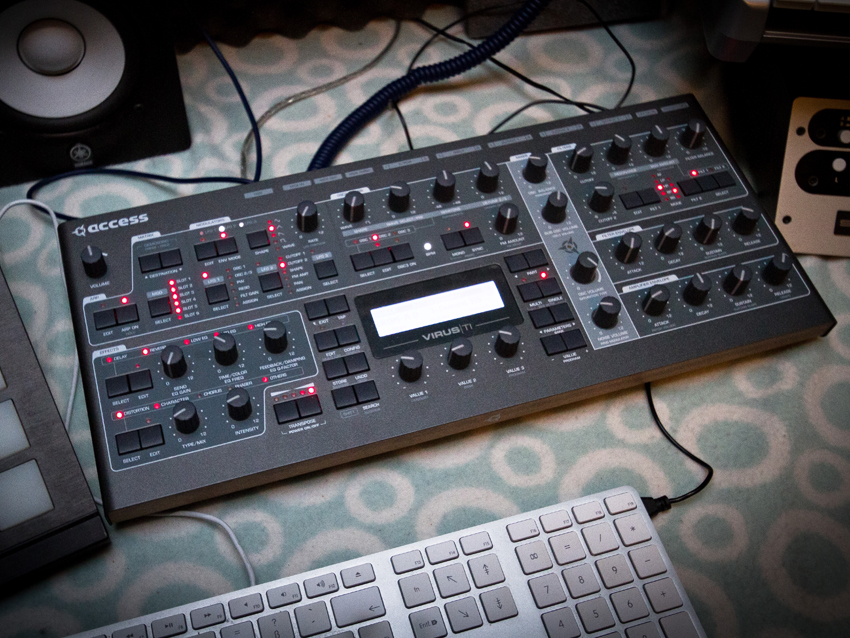
Access Virus
“It’s not 100% analogue and I don’t go out with the audio.It’s on a USB cable.
"It has great analogue oscillators inside and analogue filters but the sound comes in over USB. It’s like a software synth. I use it a lot.”
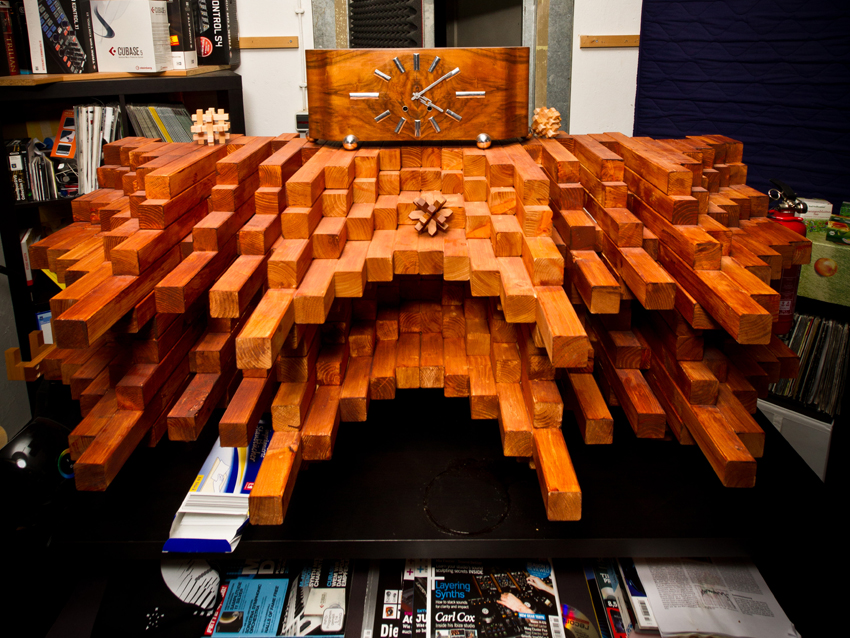
Acoustic treatment
“I worked a lot on the acoustics of this space. Making my style of music it’s very important to reduce reflections so you can mix accurately.
"This is my so-called ‘quadratic residue diffuser’. It’s made out of wood and is placed about two meters behind the sweet spot in my studio. I had someone make it for me in the wood shop. They weren’t happy about it though. The smallest length they would cut for free is ten centimetres so I worked it all out from that! So it’s a mix of being practical and getting the best acoustic results. In total it consists of 384 pieces and weighs about 80kg! It’s got a certain energy to it because it’s so large, heavy and beautiful. But it works great and it comes apart too If I ever wanted to transport it.”
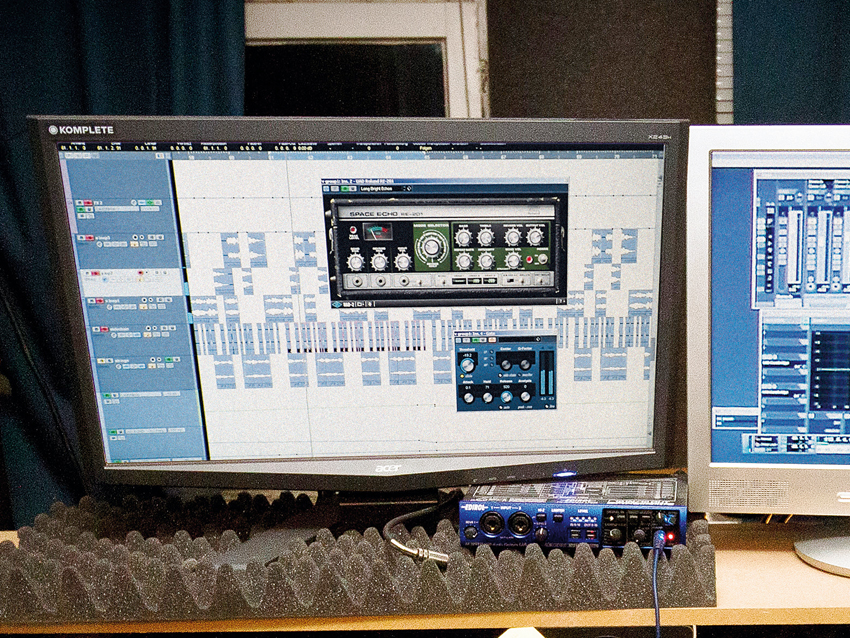
Edirol UA-101
“While the Edirol is great I don’t want to use it for audio out right now, it’s a stand in for my RME.
“To be honest, I didn’t really notice a difference between it and the RME for sound, but I don’t want to use it because while I trust the RME, I worry about what the D/A converters in the Edirol are doing. Maybe I’ll buy an RME Fireface now, or a [Prism Sound] Orpheus? Something with a really good clock. I was at Sharooz’s studio in London and he has an Orpheus and Focal Twin 6 BE monitors and they sound really good.”
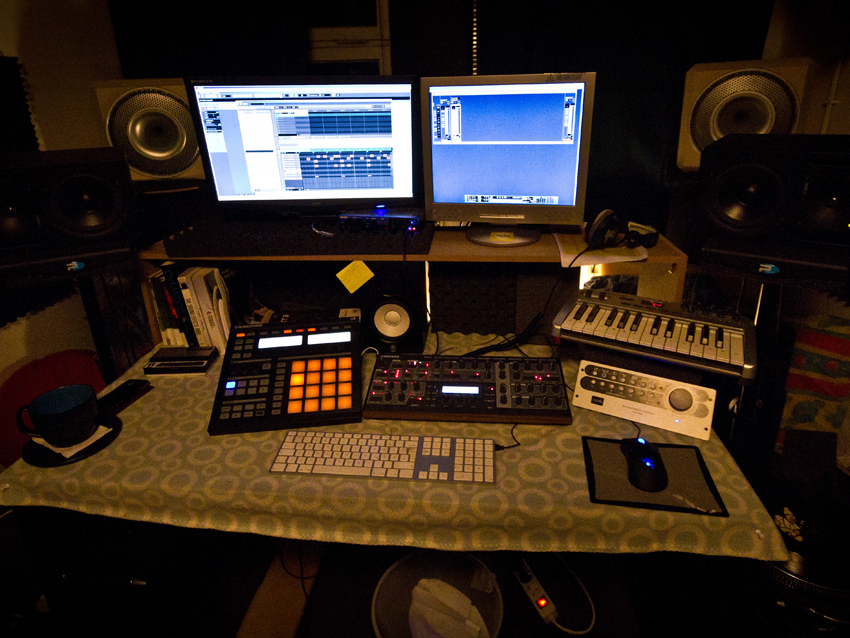
Workspace
“I use a Mac for my office. It’s more beautiful, smaller, better. I DJ with a Mac too. And I want to change my studio computer to a Mac.
"I’m already using a Mac keyboard with my PC! But I want to finish the album first.I’ve used a PC from the start and they’re way cheaper, but now I want to change because everything is easierand quicker with the Mac.”

Future Music is the number one magazine for today's producers. Packed with technique and technology we'll help you make great new music. All-access artist interviews, in-depth gear reviews, essential production tutorials and much more. Every marvellous monthly edition features reliable reviews of the latest and greatest hardware and software technology and techniques, unparalleled advice, in-depth interviews, sensational free samples and so much more to improve the experience and outcome of your music-making.


“I’m looking forward to breaking it in on stage”: Mustard will be headlining at Coachella tonight with a very exclusive Native Instruments Maschine MK3, and there’s custom yellow Kontrol S49 MIDI keyboard, too
“Turns out they weigh more than I thought... #tornthisway”: Mark Ronson injures himself trying to move a stage monitor
“I’m looking forward to breaking it in on stage”: Mustard will be headlining at Coachella tonight with a very exclusive Native Instruments Maschine MK3, and there’s custom yellow Kontrol S49 MIDI keyboard, too
“Turns out they weigh more than I thought... #tornthisway”: Mark Ronson injures himself trying to move a stage monitor









